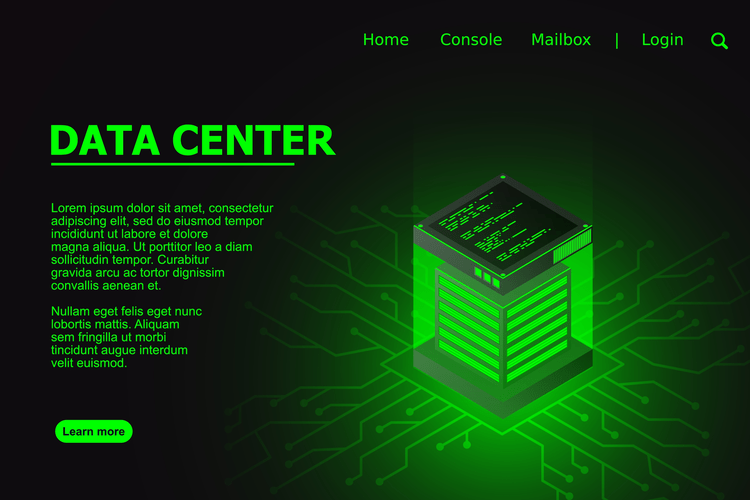Content
The authors aimed to design an architecture to build end-to-end solutions comprising sensors, distribute services, applications, and other issues such as machine learning, data analysis, recommendation systems, and context inference. As mentioned above, Fog platforms are a highly virtualized environment, supporting multi-tenancy and are capable of provisioning resource management facilities to Cloud systems.
This will further drive the need for more efficient fog computing solutions that provide low latency and holistic intelligence simultaneously. Currently, such resources are mostly being provided by cloud service providers, where the computation and storage capacity exists.
Edge Computing vs. Fog Computing: What’s the Difference? – CMSWire
Edge Computing vs. Fog Computing: What’s the Difference?.
Posted: Tue, 14 Aug 2018 07:00:00 GMT [source]
For developing Fog applications in PaaS environment, Cisco DSX is used to create a bridge between SaaS (which actually offers Metal-as-a-Service) and many types of IoT devices. It provides simplified management of applications, automates policy enforcement and supports multiple development environments and programming languages. The data service decides the suitable place for data analysis, identifies which data requires action and increases security by making data anonymous. Cloud computing provides many benefits to individuals and organizations through offering highly available and efficient computing resources with an affordable price .
Avantages Of Edge Computing
The processing and storage of fog computations is carried out at the edge of the network segment close to the source of information, which is critical for real-time control. In short, edge computing offers a far less expensive route to scalability, allowing companies to expand their computing capacity through a combination of IoT devices and edge data centers. The use of processing-capable edge computing devices also eases growth costs because each new device added doesn’t impose substantial bandwidth demands on the core of a network.
However, based on different QoS and cloud-fog cost models, the system is not cost-optimal. Mahmud, et al. analyzed the literature about cloud-based IoT-Healthcare solutions in terms of application mode and system architecture. In conclusion, they presented an IoT-healthcare approach structure based on fog computing and explored how to integrate healthcare solutions into fog-cloud services to extend the cloud-based structure.
How Edge Computing Enables New Iot Innovations
Additionally, due to the insecure channel, data integrity and privacy should be considered. Edge computing stores data locally and only send some of the data to the cloud. This research work is a part of SK Ph.D. work, which is being conducted under the supervision of SP. The paper presents extensive review about the Fog computing applications, current security threats and proposes comprehensive techniques to increase the security of overall Fog platform. Table 1 presents the relationship of the surveyed Fog application areas and the categories of security issues. A description of each category can be found in “Review methodology” section. The table identifies that none of the surveyed application areas have taken the necessary precautions to minimise the potential impact and risk of each category of security threat.
Generally, SLRs use well-defined procedures for identifying, analyzing, and synthesizing the results of papers relevant to a specific subject, and answering to the pre-specified research questions related to the subject . Reviewing the published papers finds out the current gap on the subject and helps the researchers to propose their new ideas. Therefore, in this work, the SLR process is used as an accurate method to classify fog-based healthcare systems. A concept known as fog computing allows an internet-connected vehicle, like a Tesla, to respond quickly to a potential collision. Fog computing extends an organization’s network, creating speedier data processing.
- In Information Security from Amirkabir University of Technology, Iran, in 2011.
- Depending on the size of the company, this could mean the data of thousands or even millions of users is compromised.
- In this lesson, you’ll learn more about fog computing and how it can be used to make businesses more efficient.
Fog platforms should be capable of handling highly time-sensitive applications, but the proposed validation process might take longer to make decisions. Another flaw in their technique is that the solution itself is inherently vulnerable to DoS attacks due to the complex authentication process in PR and PDE. However, these security concerns can be reduced by building a performance model that is collecting values of memory, CPU and disk utilization and periodically comparing with estimated values . In case the system identifies an anomaly, the user would be redirected to the Shark Tank cluster, which is essentially a proxy to closely monitor the user but can grant full application capabilities. A real-time brain state detection system has been implemented using a multi-tier Fog computing infrastructure . The Fog platform is the data hub and signal processor that receives and processes data streams generated by electroencephalogram headset and motion sensors. The Fog server extracts time-frequency characteristics from signals and dispatches them to the brain state classifiers.
Fog Computing Advantages And Disadvantages
The Cloud can handle very complex neural networks thanks to very high computing power. Tao H, Bhuiyan MZA, Abdalla AN, Hassan MM, Zain JM, Hayajneh T. Secured data collection with hardware-based ciphers for IoT-based healthcare. Steele R, Lo A. Telehealth and ubiquitous computing for bandwidth-constrained rural and remote areas. Maadani M. Reanalyzing a simplified Markov model for the low-density P2P wireless sensor and actuator networks. Biswas J, Maniyeri J, Gopalakrishnan K, Shue L, Phua JE, Palit HN, et al. “Processing of wearable sensor data on the cloud-a step towards scaling of continuous monitoring of health and well-being,” in. As you can see from the Tesla example, speed or lack of a lag or downtime was hugely important in avoiding a serious collision. Also, when you don’t have an internet connection, you cannot access the cloud.
With IoT edge computing devices and edge data centers positioned closer to end-users, there is less chance of a network problem in a distant location affecting local customers. Even in the event of a nearby data center outage, IoT edge computing devices will continue to operate effectively on their own since they handle vital processing functions natively. Edge computing’s most significant benefit is its ability to increase network performance by reducing latency. Since IoT edge computing devices process data locally or in nearby edge data centers, the information they collect doesn’t have to travel nearly as far as it would under a traditional cloud architecture. Al-khafajiy, et al. proposed a framework that provides fog2fog communication, which leads to optimal job allocation, optimal resource management, and achieving the highest QoS and a sustainable network paradigm for healthcare applications. In addition, an architecture was proposed comprising three layers called things, fog nodes, and cloud data center.

For instance, a small enclosure with many servers and some storage could be installed on top of a wind turbine to collect and process data produced by sensors within the turbine. Another example can be a railway station placing a decent amount of compute and storage within the station itself to facilitate easier collection and processing of track and rail traffic sensor data. The results of such processing could be sent back to another data center for review, archiving and merger with other data results. The system will create a more reliable and efficient support model for benefit administration and claims processing. This initiative will implement a more flexible and configurable BA system for administering benefits and claims. Benefits will be defined using Code Administration components with additional configurable benefit data and payment levels.
What Can I Do To Prevent This In The Future?
These schemes consists of a hybrid of symmetric and public-key encryption algorithms, as well as other variants of attribute-based encryption. As homomorphic encryption permits normal operations without decrypting the data, the reduction in key distribution will maintain the privacy of data. Other research work provides a similar framework to secure smart grids, regardless of Fog computing, called the Efficient and Privacy Preserving Aggregation scheme . The system performs data aggregation based on the homomorphic Paillier cryptosystem. As the homomorphic ability of encryption makes it possible for local network gateways to perform an operation on cipher-text without decryption, it reduces the authentication cost while maintaining the secrecy of data. Fog computing is a decentralized computing architecture whereby data is processed and stored between the source of origin and a cloud infrastructure.

Fog acts as a mediator between data centers and hardware, and hence it is closer to end-users. If there is no fog layer, the cloud communicates with devices directly, which Software construction is time-consuming. Such nodes are physically much closer to devices if compared to centralized data centers, which is why they are able to provide instant connections.
Provisioning 5g Mobile Networks
At the same time, though, fog computing is network-agnostic in the sense that the network can be wired, Wi-Fi or even 5G. In addition, having all endpoints connecting to and sending raw data to the cloud over the internet can have privacy, security and cloud vs fog computing legal implications, especially when dealing with sensitive data subject to regulations in different countries. Popular fog computing applications include smart grids, smart cities, smart buildings, vehicle networks and software-defined networks.

When a query is made at the hardware layer, the fog layer analyzes and processes the query. In addition, using fog-cloud architecture in the healthcare system could reduce the death rate. Sood and Mahajan proposed a healthcare system based on IoT-fog that continuously monitors and analyzes the blood pressure and alerts it to the system consumers via their cell phones. They used an artificial neural network to analyze blood pressure statistics because it has precision, recall, and sensitivity. The designed system collects the user’s health parameters through IoT sensors, and then identifies the blood pressure level based on it.
I wonder what the ramifications will be in certain industries that are tied to traditional data centers and cloud deployment models. Fog can also include cloudlets — small-scale and rather powerful data centers located at the edge of the network. Their purpose is to support resource-intensive IoT apps that require low latency. Here, the resources get placed in logical locations somewhere in between the data source and the cloud, or we can say that fog computing involves bringing intelligence and processing closer to the data source.
The increase in the number of connected devices with cloud resulted in the formation of fog computing. Fog computing aka fogging or fog networking is a term that is coined by Cisco. It is a decentralized computing structure that refers to extending cloud computing to the edge of an enterprise’s network. If you have any queries regarding our article on the advantages and disadvantages of fog computing then do comment in the comment section below.
Fog computing can not only provide a 5G network with better service quality, but they can also help in predicting the future need of mobile users . Inherently, Fog nodes are distributed within the proximity of users; a characteristic that reduces latency and establishes adjacent localized connections. Broadly speaking, the diverse and multiple topological and mesh network connections among Mobile network, Fog nodes, and Cloud platform make Fog system beneficial for 5G technology, NLV and SDN . Fog computing is also able to handled load balancing issues of a 5G network . When many users are simultaneously requesting computation in a large-scale network, creating small cells of Fog nodes based on the size of requested task and system parameters can improve load balancing.
More specifically, they demonstrate that the proposed technique can correctly identify abnormal behaviour with an average accuracy greater than 90%. More specifically, eighteen students from a single university over the duration of four days. Hence, the results in terms of accuracy they claim might not reproducible or universal. Their technique can be improved by increasing the population size and running the experiment over longer timespan . Furthermore, the computational requirements of such an approach are not mentioned.